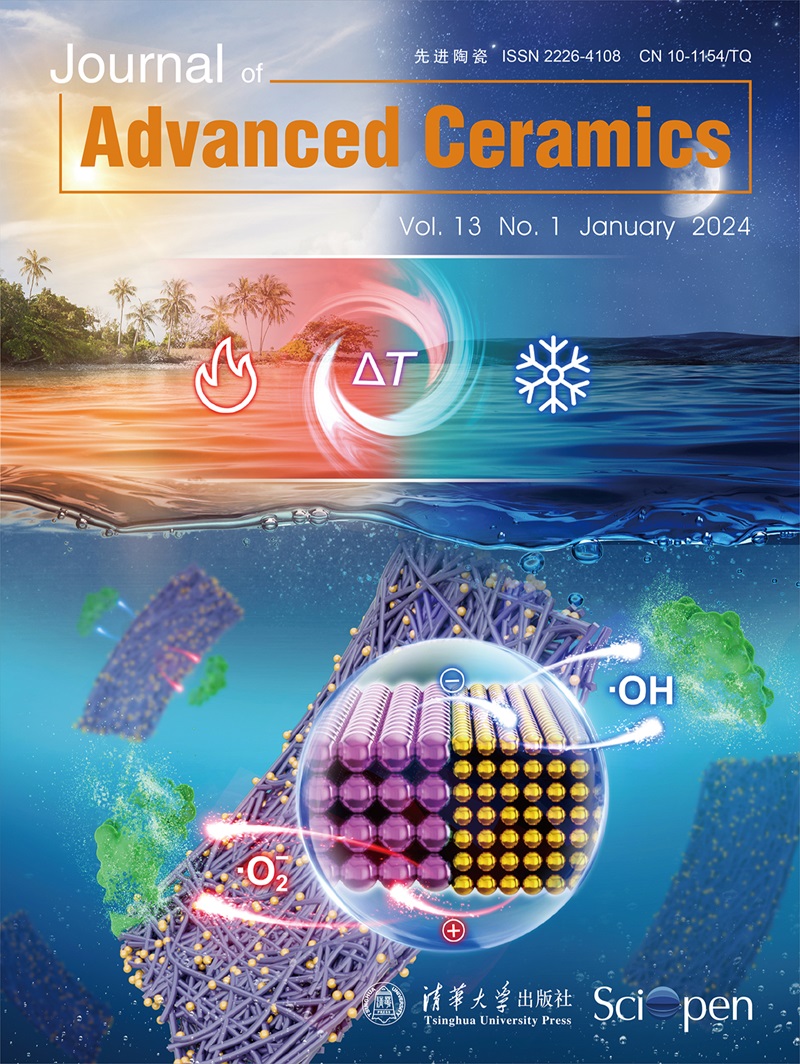高纯氧化铝常温闪速烧结
IF 16.6
1区 材料科学
Q1 MATERIALS SCIENCE, CERAMICS
引用次数: 0
摘要
本文首次实现了高纯氧化铝在室温下的闪速烧结(FS),这是以前认为高纯氧化铝电导率低而无法实现的。利用表面闪络产生的电弧在室温和低气压下诱发FS。在电弧约束下,在60 kPa下成功地实现了高纯氧化铝的FS,使氧化铝样品的相对密度达到了98.7%。采用有限元模拟的方法,分析了电弧诱导FS过程中电弧与高纯氧化铝试样之间的电热耦合。结果表明,电弧对样品产生了热电效应,最终提高了氧化铝样品的导电性。电导率增加的结果是在样品表面形成导电通道,这是在室温下实现高纯度氧化铝FS的关键因素。电弧约束技术可以应用于许多材料,如离子导体,半导体,甚至绝缘体,在室温和低压条件下。本文章由计算机程序翻译,如有差异,请以英文原文为准。
Flash sintering of high-purity alumina at room temperature
For the first time, the flash sintering (FS) of high-purity alumina at room temperature, which was previously considered unachievable due to its low electrical conductivity, was conducted herein. The electrical arc originating from surface flashover was harnessed to induce FS at room temperature and low air pressure. The successful FS of high-purity alumina was realized at 60 kPa under the arc constraint, resulting in a notable relative density of the alumina sample of 98.7%. The electric–thermal coupling between the arc and high-purity alumina sample during the arc-induced FS process was analyzed via the finite element simulation method. The results revealed the thermal and electrical effects of the arc on the sample, which ultimately enhance the electrical conductivity of the alumina sample. The formation of a conductive channel on the sample surface, a result of increased electrical conductivity, was the pivotal factor in achieving FS in high-purity alumina at room temperature. The arc constraint technique can be applied to numerous materials, such as ionic conductors, semiconductors, and even insulators, under room-temperature and low-air-pressure conditions.
求助全文
通过发布文献求助,成功后即可免费获取论文全文。
去求助
来源期刊

Journal of Advanced Ceramics
MATERIALS SCIENCE, CERAMICS-
CiteScore
21.00
自引率
10.70%
发文量
290
审稿时长
14 days
期刊介绍:
Journal of Advanced Ceramics is a single-blind peer-reviewed, open access international journal published on behalf of the State Key Laboratory of New Ceramics and Fine Processing (Tsinghua University, China) and the Advanced Ceramics Division of the Chinese Ceramic Society.
Journal of Advanced Ceramics provides a forum for publishing original research papers, rapid communications, and commissioned reviews relating to advanced ceramic materials in the forms of particulates, dense or porous bodies, thin/thick films or coatings and laminated, graded and composite structures.
 求助内容:
求助内容: 应助结果提醒方式:
应助结果提醒方式:


